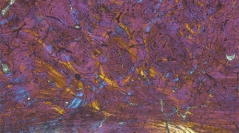

 Comptes Rendus Palevol
14 (8) - Pages 637-645
Comptes Rendus Palevol
14 (8) - Pages 637-645Our knowledge of the histology of the Cervidae (deer) was recently expanded with a work describing long bone and tooth histology of various taxa (Kolb et al., 2015a). Included in this study was the Miocene Procervulus, an early cervid whose growth rate was found to be especially low. The present study examines further “stem-cervid” bone histology in describing that of other Miocene taxa, Dicrocerus elegans and Euprox sp. With their inclusion in the dataset of Kolb et al. (2015a), we estimate the ancestral growth rates among cervids, and studied its correlation with body size. The skeletochronology of Dicrocerus suggests a relatively high growth rate for its body size differing from the condition of Procervulus and Euprox, and hence, documenting diversity in the life history traits of Miocene cervids.
Bone histology, Cervidae, Dicrocerus, Euprox, Middle Miocene, Palaeohistology, Skeletochronology